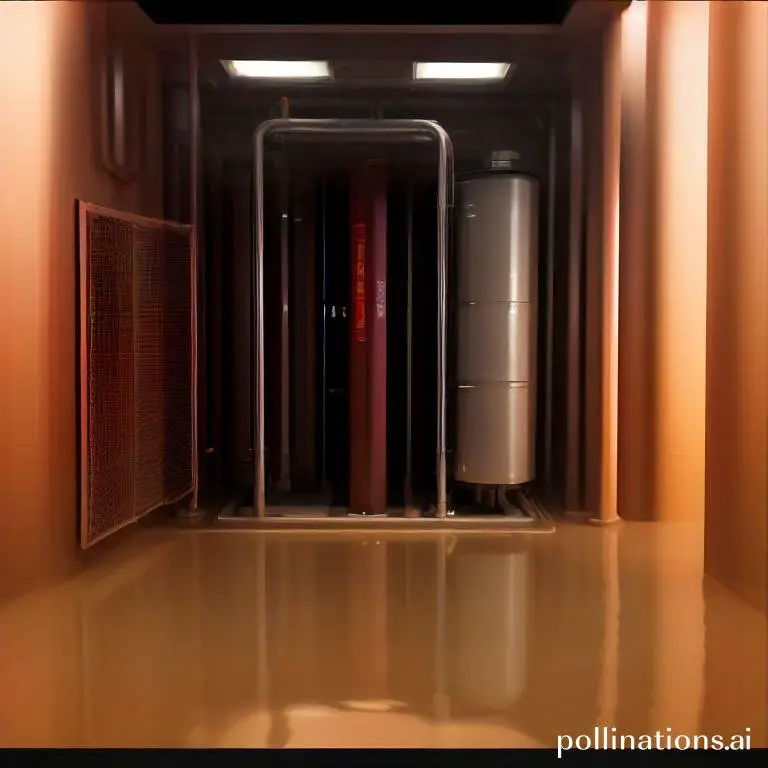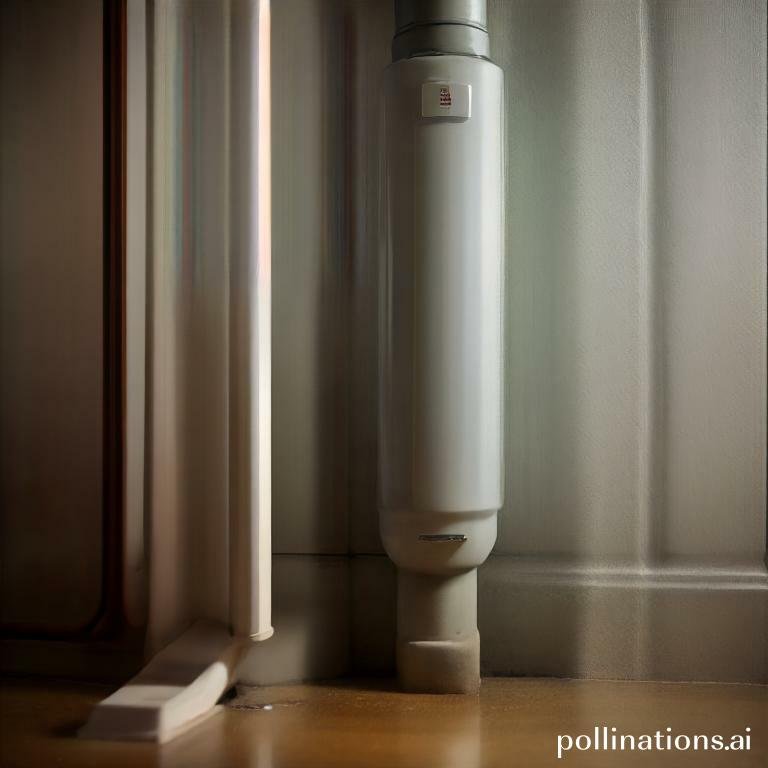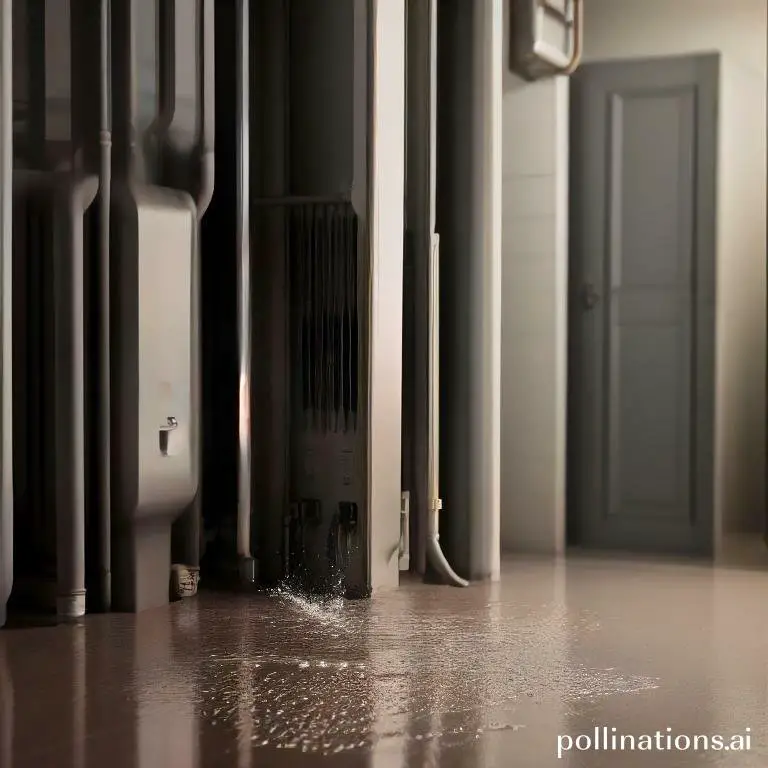
Heat pump water heaters are a popular and efficient choice for residential water heating. One important aspect of maintaining their performance is sediment removal.
Over time, sediment can build up in the tank, reducing the efficiency and lifespan of the unit. Regular removal of sediment is crucial to ensure optimal performance and energy savings.
In this article, we will discuss the importance of sediment removal for heat pump water heaters and provide tips on how to effectively remove sediment from your unit.
What is sediment buildup in heat pump water heaters?
Sediment buildup in heat pump water heaters refers to the accumulation of solid particles, minerals, and debris that settle at the bottom of the tank or adhere to the heating elements. Over time, these sediments can cause various issues and adversely affect the performance and efficiency of the water heater.
1. How does sediment accumulate in heat pump water heaters?
Sediment buildup occurs due to the natural process of water heating. When water is heated, minerals and impurities present in the water separate and settle at the bottom of the tank. Additionally, as water flows through the pipes and the tank, it carries along small particles and debris that gradually accumulate over time.
Example: When hard water is used in a heat pump water heater, the high mineral content in the water can lead to faster sediment accumulation compared to using soft water.
2. What are the effects of sediment buildup in heat pump water heaters?
Sediment buildup can have several negative effects on heat pump water heaters:
| Effects | Consequences |
|---|---|
| Reduced Efficiency | The sediments act as an insulating layer, reducing the efficiency of heat transfer and making the water heater work harder to heat the water. This can result in increased energy consumption and higher utility bills. |
| Decreased Lifespan | The sediments can cause corrosion and damage to the tank and heating elements, leading to premature failure and the need for costly repairs or replacement of the water heater. |
| Poor Water Quality | Sediments can affect the taste and odor of the water, making it unpleasant to use. They can also clog the plumbing fixtures and reduce water flow, resulting in inconvenience for users. |
Example: If sediment buildup is not addressed promptly, it can lead to a significant decrease in the efficiency of the heat pump water heater, causing longer wait times for hot water and potential damage to the internal components.
Signs that your heat pump water heater needs sediment removal
Is your heat pump water heater not performing as efficiently as before? Are you experiencing unusual noises or discolored water? These could be signs that your heat pump water heater needs sediment removal. Sediment buildup in your water heater can lead to decreased efficiency and other issues. In this section, we will traverse the common signs that indicate the need for sediment removal and provide helpful information to address the problem.
1. Decreased efficiency of heat pump water heater
One of the first signs that your heat pump water heater needs sediment removal is a decrease in efficiency. If you notice that your water heater takes longer to heat up the water or struggles to maintain a consistent temperature, it could be due to sediment buildup. Sediment acts as an insulator, making it harder for the heat pump to transfer heat effectively.
2. Unusual noise coming from the heat pump water heater
Another indication of sediment accumulation in your heat pump water heater is the presence of unusual noises. If you hear popping, cracking, or rumbling sounds coming from your water heater, it could be a result of sediment being heated and trapped within the tank. This can not only be annoying but also a sign that sediment removal is necessary to prevent further damage to the system.
3. Discolored or foul-smelling water
Discolored or foul-smelling water is a clear sign that sediment has built up in your heat pump water heater. Sediment can cause the water to appear rusty, muddy, or have a strange odor. This can be concerning for both the quality of your water and the health of your water heater. Sediment removal is essential to restore clean and fresh water supply from your heat pump water heater.
4. Increased energy bills
If you’ve noticed a sudden increase in your energy bills, sediment buildup in your heat pump water heater could be the culprit. Sediment acts as an insulator, forcing the heat pump to work harder and consume more energy to heat the water. By approaching sediment removal, you can improve the efficiency of your water heater and potentially reduce your energy costs.
Steps to Remove Sediment from Heat Pump Water Heaters
In the realm of maintaining the efficiency and longevity of your heat pump water heater, it’s important to regularly remove sediment buildup. Sediment, such as minerals and debris, can accumulate over time and hinder the performance of your water heater. Follow these simple steps to effectively remove sediment from your heat pump water heater:
Step 1: Turn off the Heat Pump Water Heater
Before beginning the sediment removal process, ensure that the heat pump water heater is turned off. This will prevent any potential accidents or injuries meanwhile you work.
Step 2: Drain the Water Heater
Locate the drain valve on your heat pump water heater and attach a hose to it. Place the other end of the hose in a suitable drain location, such as a floor drain or outside. Open the drain valve and allow the water heater to fully drain. This will remove any excess water and sediment from the tank.
Step 3: Flush the Water Heater with Clean Water
Once the water heater is drained, close the drain valve and fill the tank with clean water. Allow the water to sit for a few minutes to help loosen any remaining sediment. Then, open the drain valve again and flush out the water and sediment. Repeat this process until the water runs clear.
Step 4: Inspect the Heat Pump Water Heater for Any Damage
Whilst the tank is empty, take the opportunity to inspect the heat pump water heater for any signs of damage or wear. Check for leaks, rust, or other issues that may affect the performance of the unit. If you notice any problems, it’s advisable to contact a professional for repairs.
Step 5: Turn on the Heat Pump Water Heater
Once you’ve completed the sediment removal process and inspected the water heater, it’s time to turn it back on. Follow the manufacturer’s instructions to safely restart the unit. Allow the water heater to heat up and reach the desired temperature before using it again.

Preventing sediment buildup in heat pump water heaters
Sediment buildup is a common issue in heat pump water heaters that can lead to decreased efficiency and performance. To ensure optimal functioning of your heat pump water heater, imperative to take preventive measures to minimize sediment accumulation. Here are some effective strategies:
1. Regular maintenance
Maintaining your heat pump water heater regularly is crucial in preventing sediment buildup. Schedule periodic inspections and cleanings by a professional technician to remove any accumulated sediment. Regular maintenance not only improves the efficiency of your water heater but also extends its lifespan.
2. Installing a sediment filter
Installing a sediment filter in your heat pump water heater system can significantly reduce the amount of sediment that enters the tank. The filter traps particles such as sand, dirt, and debris, preventing them from settling at the bottom of the tank. This helps maintain optimal water flow and prevents clogs in the system.
3. Adjusting the temperature of the heat pump water heater
Controlling the temperature of your heat pump water heater can also help prevent sediment buildup. Lowering the temperature to around 120 degrees Fahrenheit can minimize the accumulation of sediment. This is because higher temperatures can cause minerals in the water to precipitate and settle as sediment.
| Strategy | Benefits |
|---|---|
| Regular maintenance | – Improved efficiency – Extended lifespan |
| Installing a sediment filter | – Reduced sediment accumulation – Prevents clogs |
| Adjusting temperature | – Minimizes sediment buildup – Prevents mineral precipitation |

Benefits of Sediment Removal in Heat Pump Water Heaters
Sediment removal is a crucial aspect of maintaining the optimal performance and longevity of heat pump water heaters. By regularly removing sediment from your water heater, you can enjoy a range of benefits that empower the efficiency, lifespan, and water quality.
1. Increased Efficiency
One of the primary benefits of sediment removal is the increased efficiency it brings to your heat pump water heater. Sediment buildup can act as an insulating barrier, reducing the heat transfer efficiency within the system. This means that your water heater needs to work harder and use more energy to heat the water to the desired temperature. By removing sediment, you can improve the heat transfer process, leading to greater energy efficiency and reduced operating costs.
2. Longer Lifespan of the Heat Pump Water Heater
Sediment accumulation in a water heater can also contribute to the deterioration of the system over time, potentially leading to premature failure. The sediment can settle at the bottom of the tank, causing corrosion and reducing the overall lifespan of the heat pump water heater. Regular sediment removal helps to prevent this buildup, extending the lifespan of the system and saving you money on costly repairs or replacements.
3. Improved Water Quality
Sediment in the water heater can affect the quality of the water that flows into your taps and showers. It can cause discoloration, unpleasant odors, and even affect the taste of the water. By removing sediment, you can ensure cleaner, clearer, and better-tasting water for your daily use.
To emphasize the importance of sediment removal in heat pump water heaters, let’s look at the key takeaways:
- Increased efficiency: Regular sediment removal improves heat transfer efficiency, reducing energy consumption and operating costs.
- Longer lifespan: By preventing sediment buildup, you can extend the lifespan of your heat pump water heater, avoiding costly repairs or replacements.
- Improved water quality: Sediment removal ensures clean, clear, and better-tasting water for your household needs.
| Benefit | Description |
|---|---|
| Increased Efficiency | Improved heat transfer efficiency, reduced energy consumption |
| Longer Lifespan | Prevents corrosion, extends the lifespan of the water heater |
| Improved Water Quality | Cleaner, clearer, and better-tasting water |
Bottom Line
In the realm of heat pump water heaters, sediment buildup can cause serious problems. Regular sediment removal is essential to maintain the efficiency and longevity of your system. At that juncture are various methods for sediment removal, it’s important to choose the right one for your specific system and needs. Whether you opt for manual flushing or a specialized sediment removal system, make sure to follow the manufacturer’s instructions and schedule regular maintenance to keep your heat pump water heater running smoothly. By taking these steps, you can save money on energy bills, extend the life of your system, and enjoy reliable hot water for years to come.
Overall, sediment removal is a crucial aspect of heat pump water heater maintenance. Don’t neglect this important task, as it can lead to costly repairs and reduced efficiency. With the right approach and regular maintenance, you can keep your heat pump water heater in top condition and enjoy reliable hot water for years to come.
Read More:
1. Sediment Removal Frequency For Solar Water Heaters
2. Sediment Removal For Rv Water Heaters










